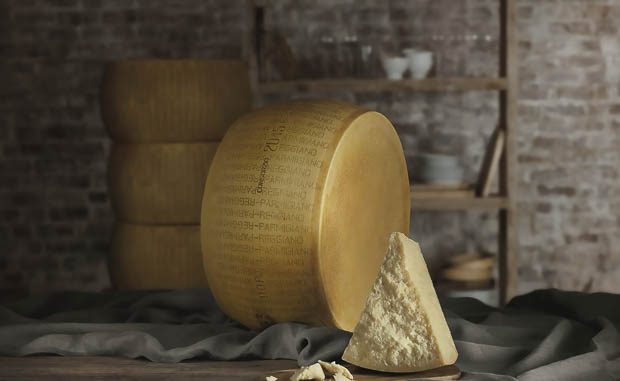
Last week, I went to an event hosted by The Parmigiano Reggiano Consortium to learn about (and most importantly taste!) the “King of Cheese”. Parmigiano Reggiano is one of the top cheeses consumed in the world, across Europe, North America and Asia. It’s even the cheese of choice for both American and Russian astronauts in the International Space Station. So, if those two countries are able to agree on one thing, surely this cheese is worth knowing more about!

Parmigiano Reggiano is a PDO product, which stands for “Protected Designation of Origin,” which is monitored by the European Union. This is why the cheese has its own Consortium, which was created to protect the heritage of the cheese, maintain quality control, and educate about the cheese worldwide. We met the two lovely representatives from Parma who took us through a tasting and a delicious tasting menu at the Après Wine Bar on Queen West in downtown Toronto. So while we sipped the delicious natural wines, we also tasted and devoured the delicious and creative pairings of Parmigiano Reggiano all in the name of “education.”

Beef tartare tarts served with an aperitif.
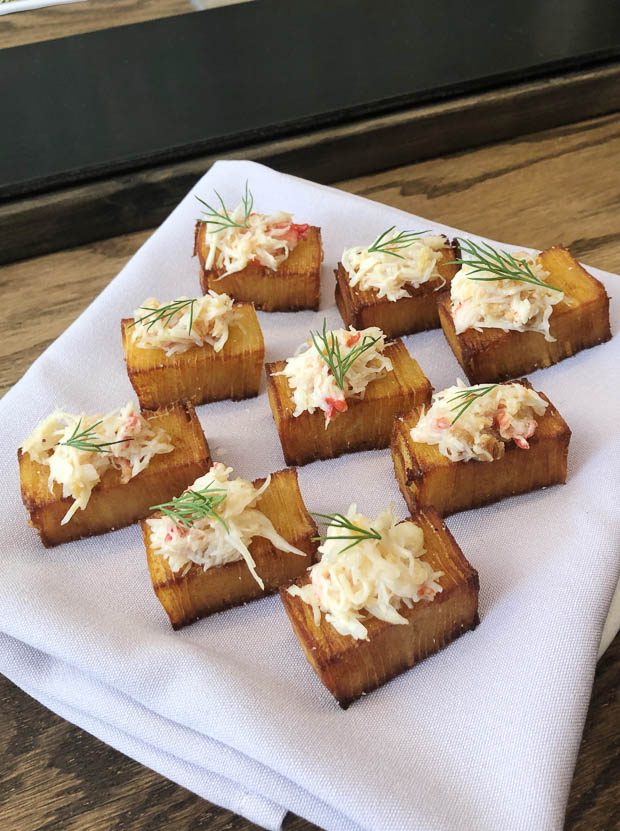
Potato galettes topped with crab and shaved Parmigiano Reggiano
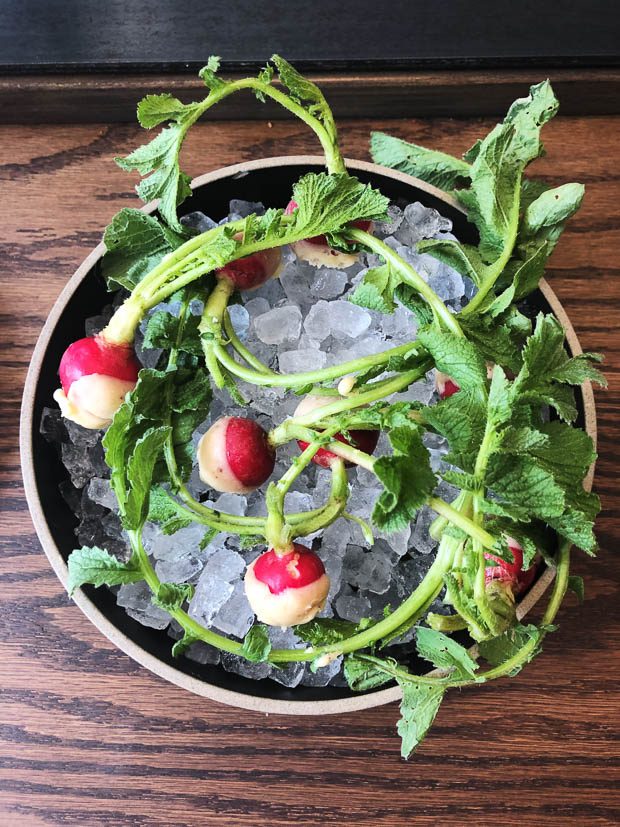
Fresh radishes dipped in Parmigiano Reggiano.
Check out the top five things I learned about Parmigiano Reggiano below!
Where Is Parmigiano Reggiano Produced?

This is the area of production for Parmigiano Reggiano in Italy.
In non-Italian, North American circles, I have experienced Parmesan and Parmigiano Reggiano being used interchangeably. However, this is as inaccurate as popping any old bottle of bubbly and calling it “champagne!” While champagne is the most famous type of sparkling wine it can only be labelled champagne if it was produced in the Champagne region of France. Similarly, only the cheese labeled “Parmigiano Reggiano” comes from the designated zone of production in Italy. This area includes Parma, Reggio-Emilia, Modena, Mantua, and Bologna. In Canada you can find parmesan cheese that is produced in other parts of Italy or North America (often in that powdery form *shudders*), and the taste is vastly different from Parmigiano Reggiano because it’s produced from different cow species and a different “terroir.” Apologies for all the wine comparisons, but it does make sense seeing as Parmigiano Reggiano pairs beautifully with wine.
How Is Parmigiano Reggiano Made?
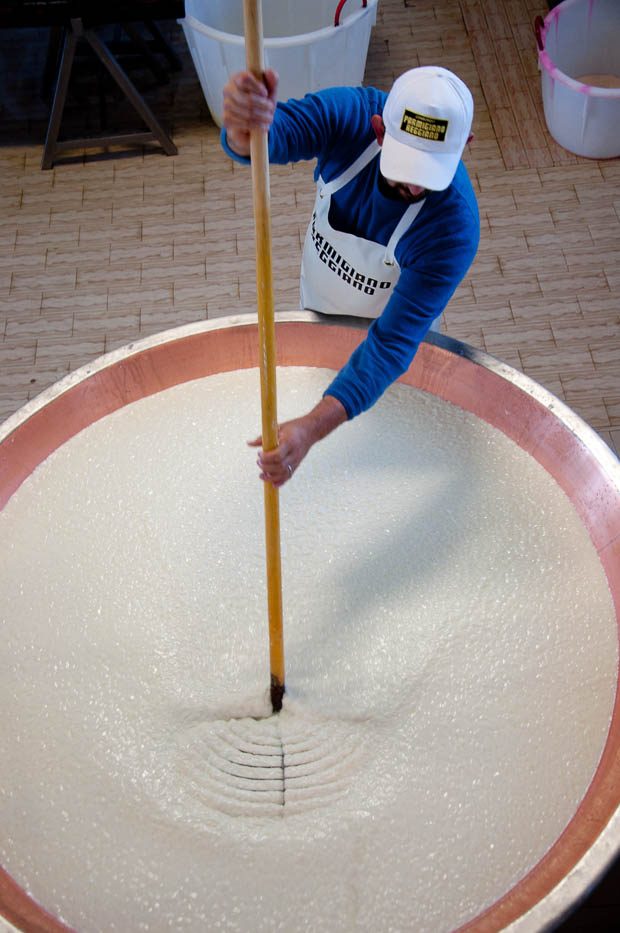
Here is a shot from the Italian factories where the special milk that will become Parmigiano Reggiano
Parmigiano Reggiano is only made of three ingredients: milk, salt and rennet. The milk is a blend that comes from four different cow species. The milk is raw and unpasteurized and is delivered to the cheese production sites within two hours of milking. The rennet is a natural enzyme that helps to coagulate the cheese. There are no additives or preservatives in Parmigiano Reggiano from end to end – this includes the cows’ feed which must be preservative free. Because of these strict standards throughout the production process, the bacteria flora naturally present in the milk is maintained, eventually leading to the distinctive, unique taste of Parmigiano Reggiano.
Secret Ingredient of Parmigiano Reggiano

Here is a shot of the three different cheeses that we tasted.
The Italian representatives say that there’s a fourth secret ingredient – it’s time! Parmigiano is aged for a minimum of 12 months, but it can be aged a lot longer. The standard Parmigiano Reggiano found on shelves is aged for 24 months. We tasted three different cheeses, 12 months, 24 months and 36 months. As you age the cheese it becomes more flavourful. At 12 months, the cheese is mild, milky and almost fruity in taste. It pairs well with white wines, and the cheese is a great addition to salad and other cold dishes. At 24 months, it becomes saltier in taste and grainier in texture. This is the most versatile type of Parmigiano Reggiano as it pairs well with medium-bodied red wines and can be used in all types of cooking. My favourite was the 36 months Parmigiano Reggiano. The taste is more savoury and complex, with a nutty taste and more salt crystals in the texture. The 36 months aged cheese is best enjoyed on its own or paired with fruit and honey after a meal.
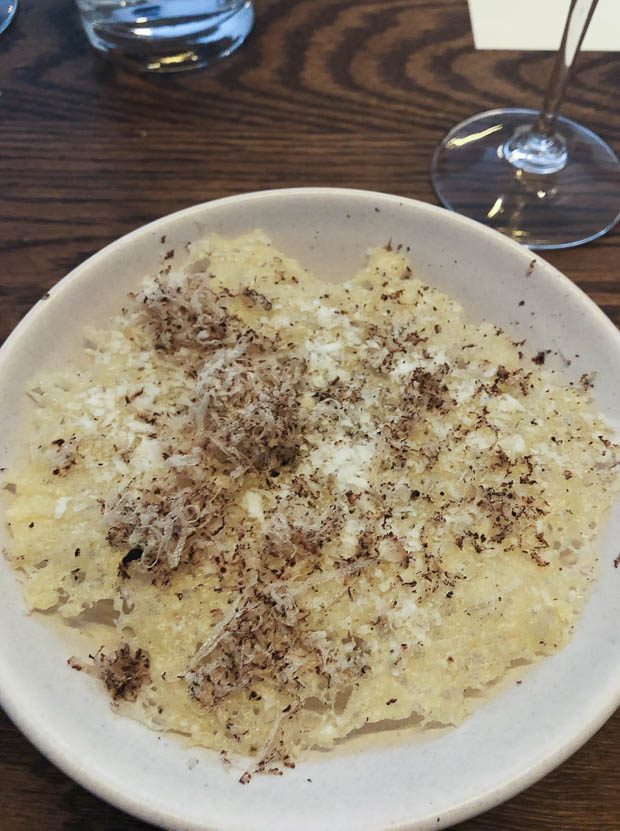
Mushroom and truffle gnocchi topped with a Parmigiano Reggiano crisp
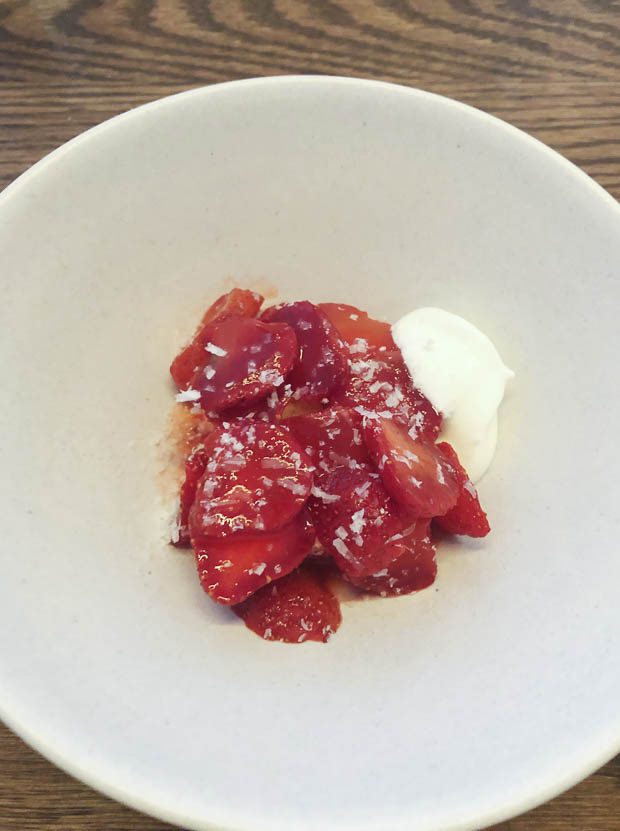
Castela Cake with fresh strawberries and Parmigiano Reggiano Chantilly Cream
More Than Just A Topping
Parmigiano Reggiano can be used for more than just a topping for pasta or an accompaniment on a charcuterie board. It can be shaved and then baked together in the oven to form a tasty crisp, as we had with the mushroom and truffle gnocchi. It can even be used as a finisher for desserts, when lightly shaved on top of something sweeter, as you can see from the dessert above. Think of how chocolate chip cookies are finished with a dusting of sea salt. The Parmigiano Reggiano adds a touch of salt, with more savoury depth than sea salt, that balances a sweet dish and keeps you coming back for more. In Japan, some chefs are using Parmigiano Reggiano to add more umami and flavouring to their food.

Lactose Intolerant?
Finally to all my lactose intolerant friends, stop hurting yourself and put down that mozzarella! Parmigiano Reggiano is lactose-free. The bacteria that ages the cheese eats all the sugar in the milk (lactose) within forty-eight hours, transforming the lactose to lactic acid. And according to the Consortium, 30 grams contains 50% of your daily calcium intake. Not a bad way to get those nutrients.
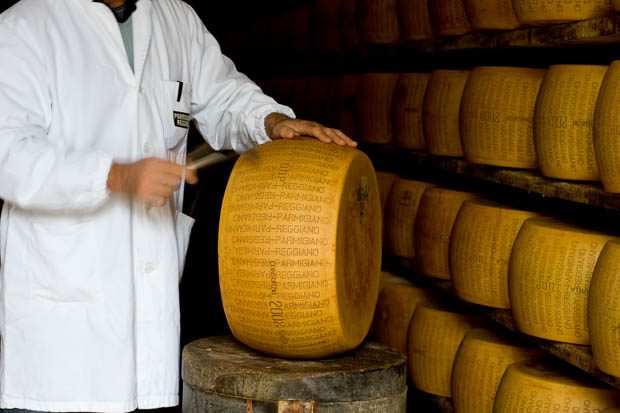
Did you know that 550L of milk are needed to produce one 40kg wheel of cheese?
How To Identify Genuine Parmigiano Reggiano?
Finally a few more tips from our friends at the Consortium. Here’s how to identify genuine Parmigiano Reggiano. First of all – look for Parmigiano Reggiano on the label and the embossed rind. It will “Parmigiano Reggiano” stamped on it, the date of production and a seal from the Parmigiano Reggiano Consortium.

If you happen to have self-control and don’t eat your Parmigiano Reggiano in one sitting, then the cheese should be wrapped in plastic wrap and stored in the dairy section of your fridge to maintain the moisture. Don’t shave and freeze the cheese as it will lose moisture and consequently its texture and flavour.
Finally, don’t waste the rind, it should be used to flavour soups, pasta sauce and stews. Just fish it out before serving!
So what are you waiting for? Next time you’re making a cheese board, skip the basic brie (that’s right I said it) and buy a wedge of 36 months Parmigiano Reggiano instead. Trust me, you won’t regret it.


